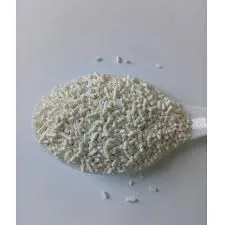
e150d food additive
Exploring E150d The Caramel Food Additive
Food additives play a vital role in the preservation, flavor enhancement, and overall appeal of various food products. Among the myriad of food additives in use today, E150d stands out as one of the most commonly utilized. Known as Caramel Color, E150d is a specific form of caramel that is widely used in the food and beverage industry.
Exploring E150d The Caramel Food Additive
One of the main attractions of E150d is its versatility. This food additive can be found in a wide range of products, from colas to soy sauce, and even in certain confections. The ability to provide consistent coloring in various pH levels and processing conditions makes it an ideal additive for manufacturers seeking uniformity in their products.
e150d food additive

Safety is a primary concern for consumers, especially when it comes to food additives. E150d has undergone extensive safety evaluations by food safety authorities around the world, including the European Food Safety Authority (EFSA) and the U.S. Food and Drug Administration (FDA). The results of these evaluations have shown that E150d is safe for consumption when used within the established guidelines. Typically, it is considered safe to consume in small quantities, which is a common practice for food additives.
However, it is worth noting that there have been mixed opinions about caramel colorings, particularly regarding the presence of certain by-products that can form during manufacturing. Some studies have suggested that specific forms of caramel coloring may contain 4-methylimidazole (4-MEI), a compound that has raised concerns due to its potential carcinogenic properties. Nevertheless, regulatory agencies have determined that the levels of 4-MEI in products containing E150d are below safety thresholds and do not pose a significant risk to health.
Consumers' understanding and awareness of food additives have increased over recent years, prompting many to scrutinize ingredient labels more closely. This has resulted in a trend towards more transparent labeling and the rise of natural food coloring alternatives. While E150d remains a staple in the industry due to its stability and cost-effectiveness, there is a growing demand for clean-label products that forego artificial additives.
In conclusion, E150d, or caramel color, exemplifies the complex landscape of food additives in modern food production. With a proven record of safety and widespread acceptance, it has cemented its place in numerous food and beverage products. As consumer preferences evolve towards natural options, the future of E150d will likely hinge on the balance between safety, cost, and the demand for transparency in food manufacturing. Understanding E150d can empower consumers, allowing them to make informed choices about the products they consume while enjoying the sensory delights that food additives can bring.
-
Aluminum Hydroxide: Quality Gels & Dried Gel AntacidNewsAug.31,2025
-
Buy High-Quality Trichloroisocyanuric Acid for Sale | TCCA 90% SupplierNewsAug.30,2025
-
Pure Sodium Dichloroisocyanurate Dihydrate | Powerful DisinfectantNewsAug.29,2025
-
Industrial Chemicals: Quality & Purity for Every IndustryNewsAug.28,2025
-
Nitrile Rubber Honoring Strict Production StandardsNewsAug.22,2025
-
Aspartame Ingredients Honoring Food Safety ValuesNewsAug.22,2025
-
Fertilizer for Balanced Plant NutritionNewsAug.22,2025
Hebei Tenger Chemical Technology Co., Ltd. focuses on the chemical industry and is committed to the export service of chemical raw materials.
-

view more DiethanolisopropanolamineIn the ever-growing field of chemical solutions, diethanolisopropanolamine (DEIPA) stands out as a versatile and important compound. Due to its unique chemical structure and properties, DEIPA is of interest to various industries including construction, personal care, and agriculture. -

view more TriisopropanolamineTriisopropanolamine (TIPA) alkanol amine substance, is a kind of alcohol amine compound with amino and alcohol hydroxyl, and because of its molecules contains both amino and hydroxyl. -

view more Tetramethyl Thiuram DisulfideTetramethyl thiuram disulfide, also known as TMTD, is a white to light-yellow powder with a distinct sulfur-like odor. It is soluble in organic solvents such as benzene, acetone, and ethyl acetate, making it highly versatile for use in different formulations. TMTD is known for its excellent vulcanization acceleration properties, which makes it a key ingredient in the production of rubber products. Additionally, it acts as an effective fungicide and bactericide, making it valuable in agricultural applications. Its high purity and stability ensure consistent performance, making it a preferred choice for manufacturers across various industries.





